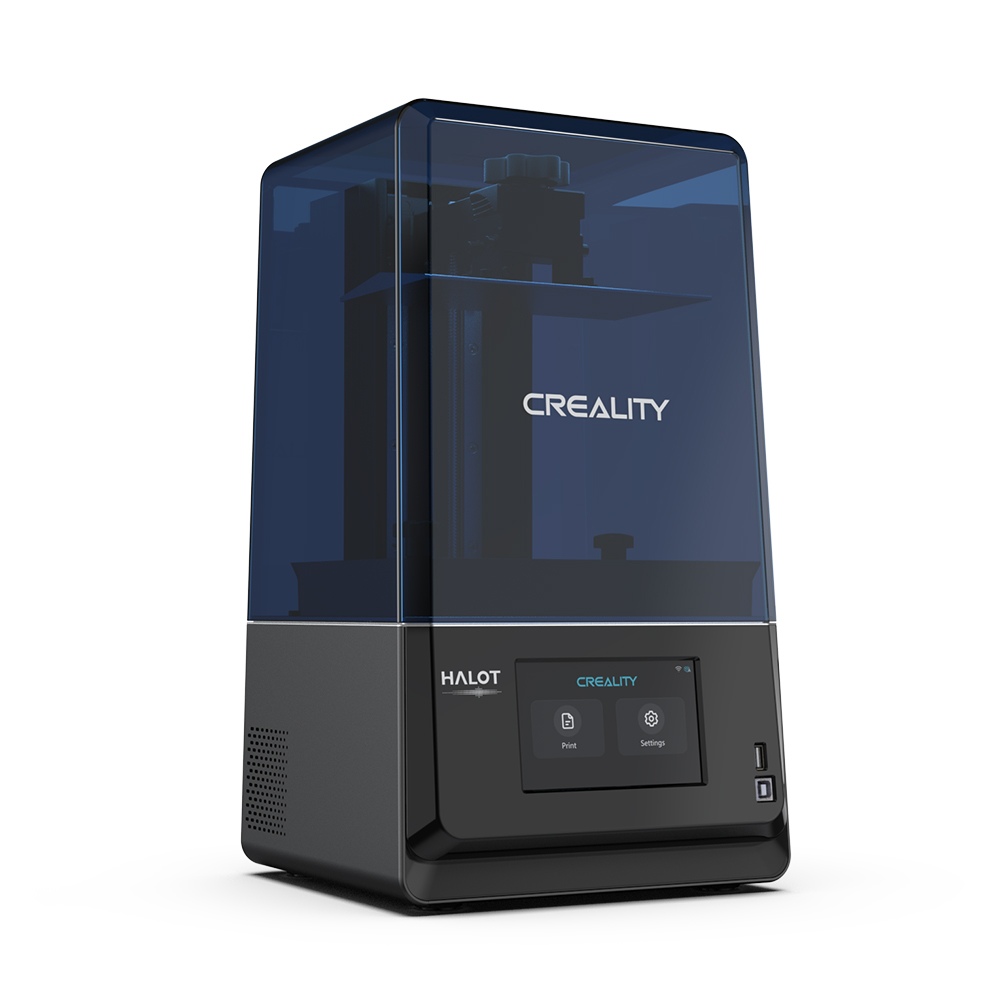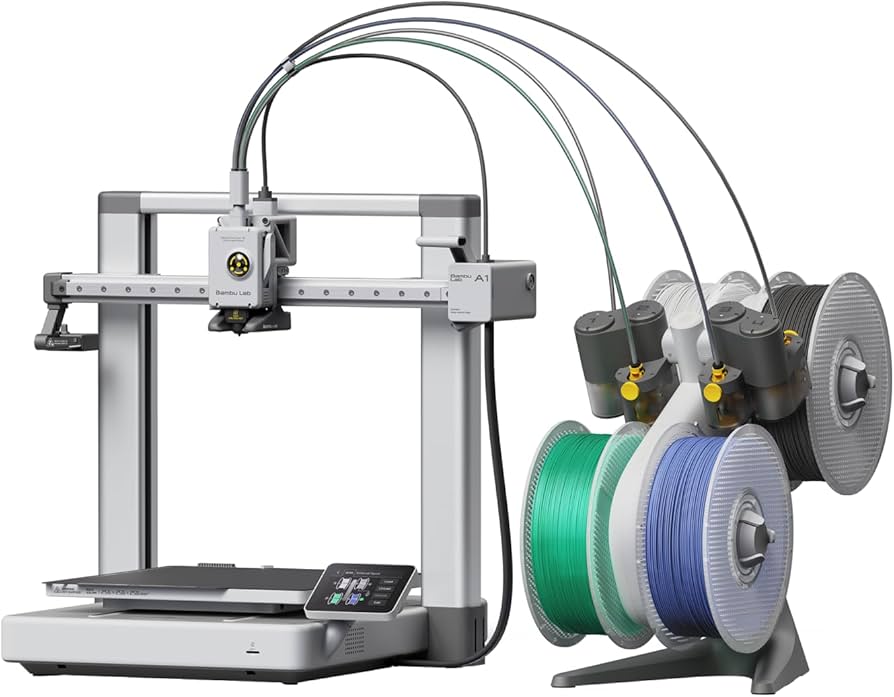Compare Halot One Plus vs A1
Comparison between the best 3D printers
Choose the best 3D printer at the best price. The cheapest 3D printers are here.
Buy a 3D printer here with 3D Fila.
 |
 |
|
| Model | Halot One Plus[BUY Halot One Plus] |
A1[BUY A1] |
| Printing Material | Resin | Filament |
| Buy Resin for Creality 3D Halot One Plus | Buy Filament forBambu Lab A1 | |
| Estimated price | $399,00 | $700,00 |
| Manufacturer | Creality 3D | Bambu Lab |
| Release Year | 2022 | 2023 |
| Print Volume [mm] | 102x172x160 | 256x256x256 |
| Printer Size [mm] | 236x245x416 | 385x410x430 |
| Weight [kg] | 6,8 | 8,3 |
| Power Loss Recovery | NO | YES |
| Maximum Resolution [mm] | 0,1 | |
| Processor | ||
| Display | Touchscreen 3,5 | |
| Power Supply | 350 W | |
| Connectivity | USB / Wi-Fi | Wi-Fi, Bambu-Bus, Cartão Micro SD |
| Operating systems | Windows, Linux, Macbook | |
| Date of registration in the system | 2022-10-11 | 2024-07-17 |
| Release date | 2022 | 2023 |
| Extra features | Crealitys Halot-One Plus printer stands out for its 4K+ resolution that delivers sharp details and consistent surfaces. It features a fast and responsive 5-inch LCD interface, as well as easy-to-use Halot Box software. It offers Wi-Fi connectivity and remote print monitoring, as well as an integrated air filtration unit, a rare feature in this price range. The Halot-One Plus is designed for the prosumer market, combining high quality with advanced features such as Wi-Fi and air filtration. During testing, it stood out for implementing these features at an affordable cost, while maintaining functionality. It features an attractive design with a UV-resistant blue cover and a robust dual rail system for the Z-axis, ensuring smooth and consistent movements. The large LCD and high resolution of the LCD mask (4320 x 2560) are other strong points, allowing for fine details and textures in prints. | The BambuLab A1 printer features fully automatic calibration, multi-color printing with the AMS system, active flow rate compensation, quick nozzle change with a clip, active motor noise cancellation, a build volume of 256x256x256 mm³, a maximum extruder temperature of 300°C, and a heated bed of up to 100°C. In addition, it has high precision, a machine health management system and an intuitive 3.5-inch touchscreen interface. |
| Support for multiple colors and materials (AMS and CFS) | NO | YES |
Notes * |
||
| Cost-benefit | 8 / 10 | 7 / 10 |
| Hardware | 1.4 / 10 | 4.8 / 10 |
| Tela | . | . |
| Print volume | 3 / 10 | 4 / 10 |
| Performance | 9 / 10 | 4 / 10 |
| [BUY Halot One Plus] | [BUY A1] |
Conclusion |
| In comparing the Creality 3D Halot One Plus and the Bambu Lab A1, it is evident that each printer has its unique strengths and caters to different user needs. The Halot One Plus is a cost-effective option that excels in delivering high-resolution prints, making it well-suited for users focused on detail and surface quality. Its more affordable price point, along with features such as an integrated air filtration system and responsive touchscreen, makes it attractive for prosumer users looking for advanced capabilities without breaking the bank. On the other hand, the Bambu Lab A1, while positioned at a higher price, offers a more robust set of features. The build volume is significantly larger, allowing users to create bigger prints. The Bambu A1 also includes automation features like fully automatic calibration and multi-color printing capabilities, which enhance usability and expand the potential applications for users requiring versatility and precision in their prints. Ultimately, the choice between the two depends on the specific needs and budget of the user. The Halot One Plus is ideal for those seeking high-quality and detailed prints at a lower cost, while the Bambu Lab A1 is better suited for users who prioritize higher volume, automation, and multi-material printing capabilities. Each printer has received a commendable cost-benefit rating, but the decision should be aligned with personal preferences for performance, print volume, and the range of features desired. |

